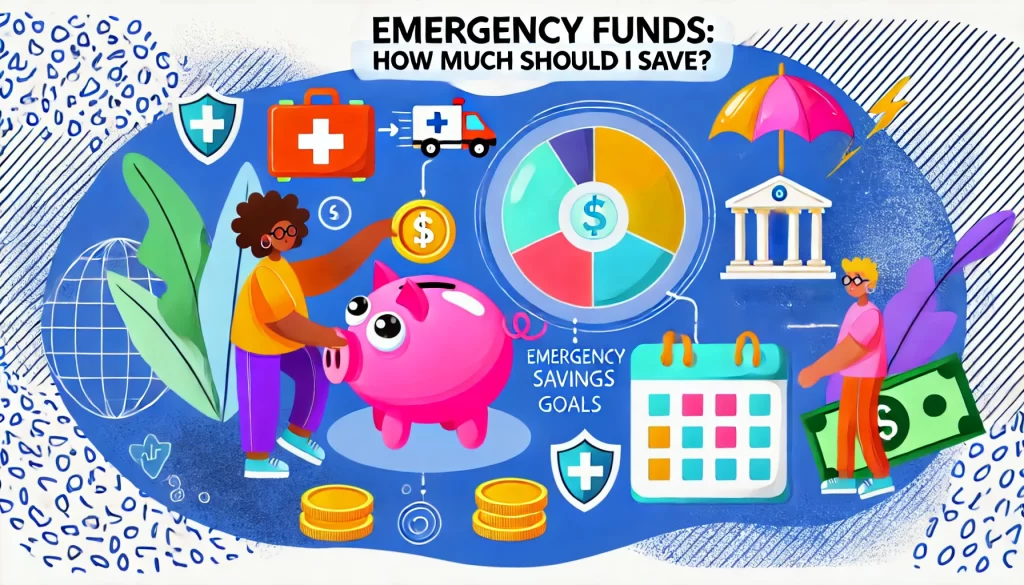Imagine standing at the edge of a serene pool, knowing the water’s calm surface belies the depth beneath. This is like our financial planning. At the heart is the emergency fund—a savings for life’s shocks. You’ve heard it before, but when emergencies happen, it’s crucial.
Having three to six months’ expenses saved is key. It’s different from savings for college or vacations. This fund helps you avoid debt from unexpected costs like car repairs or medical bills.
We set savings goals that act as lifelines. These goals can be $15,000 to $30,000 or even $2,500. With options like EverBank Performance Savings, your emergency fund can be a strong financial ally.
Building an emergency fund gives you peace of mind. It’s like a financial aqueduct, supporting your life and well-being. It’s not just about saving money, but also about choosing the right investments.
Choosing where to save your emergency money is important for your financial security. Next, we’ll explore how to build this fund and its benefits. You’ll learn how to make sure your savings are ready for anything life throws your way.
Understanding the Importance of an Emergency Fund
In today’s world, having an emergency fund is key for financial security. It helps cover unexpected costs, keeping you safe from financial trouble. Think of it as a safety net to save for emergencies that could be costly.
Emergency funds act as a financial safety net during tough times. Sadly, only 44% of U.S. adults have enough savings for emergencies. Aim to save three to six months’ expenses, based on your lifestyle and commitments. This way, you can keep up your standard of living when things get tough, like losing a job or facing big bills.
More people now see the value of these savings. About 30% of adults have more emergency savings now than last year. This shows a move towards better financial habits. Starting to save regularly, like through Direct Deposit, makes it easy to save for emergencies. This approach helps you save without the trouble of manual transfers, making saving a part of your routine.
The aim is to create a fund that gives you peace of mind and keeps your life running smoothly, even when money is tight. A solid emergency fund means you’re ready for whatever life throws your way, keeping your finances strong.
The Basics of Building Your Emergency Savings
Starting with personal finance means being serious about budgeting and saving for emergencies. Having an emergency fund is key to financial stability. It helps you handle unexpected costs, which are common for those without savings.
Experts suggest starting with a goal of saving $1,000 in an easy-to-get account. This fund is crucial for covering sudden job loss or unexpected bills. After reaching this goal, aim to save three to six months’ expenses. The right amount depends on your lifestyle, family, and bills.
Using automatic transfers makes saving easier. Many people set up automatic savings from their paychecks. This way, you save money without even thinking about it. Also, using tax refunds or bonuses can quickly grow your emergency fund without hurting your budget.
It’s important to have clear rules for your emergency fund. This helps you know what counts as an emergency. Keeping your money in easy-to-access accounts lets it grow and be ready when you need it.
Seeing saving as a must-do part of your budget helps you stay on track. You might need to spend less on things you don’t really need. Over time, this builds a big emergency fund and makes saving a habit. It’s good for your financial future and your peace of mind.
“Emergency Fund: How Much Should You Save?” – Calculating Your Personal Safety Net
Life is full of surprises, and having a solid emergency fund is key. Using an emergency fund calculator and following financial planning tips can help you figure out how much to save. This way, you can be ready for any financial surprises.
Assessing Your Monthly Expenses
First, look at your monthly bills. This includes your rent, utilities, and food. Knowing where your money goes helps you plan better. It’s important for setting realistic savings goals and knowing what to save for.
Guidelines for Different Life Situations
Your emergency fund should change with your life. If you have a steady job, saving three to six months of expenses might be enough. But if you work in a shaky industry or have a family, you might need to save more. Aim for up to a year’s expenses to be safe.
Emergency Fund Calculator Tools
An online emergency fund calculator can make saving easier. These tools look at your income, expenses, and family needs. They give you a specific savings goal. This way, you can save just the right amount for emergencies without overdoing it.
The goal of an emergency fund is to keep you afloat during tough times without taking on debt. By checking your finances often and adjusting your savings, you keep your safety net strong. It should match your current life and needs.
Choosing the Right Home for Your Emergency Fund
Choosing where to keep your emergency fund is as important as having one. These funds are for unexpected costs, so picking the right account is crucial. A high-yield savings account is a top choice because it has higher interest rates than regular accounts. This means your emergency fund can grow while you can still access it easily.
A money market account is also a great option. It offers good interest rates and keeps your money liquid. You can quickly take out cash in an emergency without losing out on savings during calm times. Both accounts are insured by the FDIC up to a certain limit, giving you extra security for your money.
Remember, an emergency fund is for quick cash needs like medical bills or losing a job suddenly. So, it’s key to pick accounts that offer easy access and good returns. While some might think about putting part of their emergency fund in taxable accounts, the main goal should always be quick access and keeping your money safe.
In conclusion, whether you choose a high-yield savings account or a money market account, making sure your emergency funds earn well and are ready fast is a smart move. This approach boosts your financial stability and peace of mind.
The Impacts of an Emergency Fund on Financial Security and Wellbeing
An emergency fund is more than just a safety net. It’s a key part of financial planning. It helps protect your money when unexpected things happen. This could be losing your job, sudden medical bills, or needing urgent home repairs.
Experts say it’s best to save enough for three to six months of living expenses. This advice shows how important it is for keeping your finances stable. With over half of Americans not having $500 saved, this advice is more critical than ever.
Having emergency savings also boosts your wellbeing. Knowing you have money set aside for emergencies gives you peace of mind. This lets you focus on your life and work without worrying about money.
Having enough in your emergency fund can also stop you from taking on high-interest debt. This debt can grow fast and hurt your financial planning goals. By checking and adjusting your savings often, you keep it strong and ready for you.
Building and keeping an emergency fund is part of securing your finances. It’s not just about money. It’s also about feeling stable and confident in all areas of life.
Conclusion: Taking the Steps to Financial Preparedness
Starting to secure your finances means building a strong emergency fund. Over half of Americans have less than three months of expenses saved, and 27% have none. Experts say saving three to six months of expenses is key. This safety net helps you handle unexpected costs without financial trouble.
Setting a savings goal can feel tough, but it’s easier with a clear plan. Starting with a goal like $7,500, based on your budget, can make it feel achievable. For those with higher incomes or unique jobs, saving a year’s expenses might be necessary. The goal is to make your emergency fund fit your life, whether you’re relying on a partner’s income or supporting a family alone.
Tools like the EverBank Performance℠ Savings and Wealthfront Cash Account help you save. CDs and savings and checking accounts also play a part. Starting to save regularly, through automatic transfers or apps that save spare change, is key. Regularly checking and adjusting your savings plan is important to reach your goals.
By focusing on these steps, you’re not just saving for emergencies. You’re building a strong financial future ready for any challenge. This approach ensures you’re secure and prepared for what life brings.






